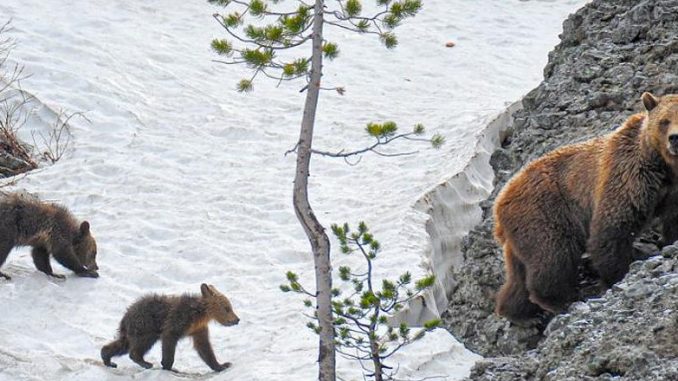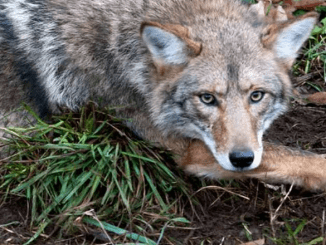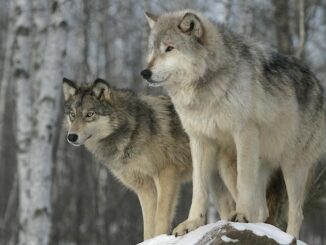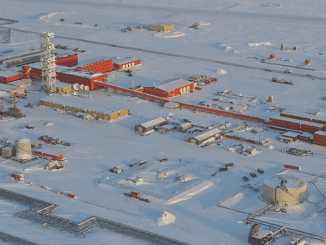
WEST YELLOWSTONE, Montana, May 24, 2021 (ENS) – The U.S. Forest Service has responded to a formal challenge from four environmental groups by halting a plan to clearcut more than 4,600 acres of pine forests, log across an additional 9,000 acres and bulldoze up to 56 miles of road on lands just outside Yellowstone National Park in the Custer Gallatin National Forest.
In April, the Center for Biological Diversity, WildEarth Guardians, Alliance for the Wild Rockies and Native Ecosystems Council challenged the project, saying it would destroy critical habitat for animals at risk and also destroy the experience of hiking the historic Continental Divide National Scenic Trail.
The four groups filed a formal notice of objection to the Forest Service’s Finding of No Significant Impact with the Objection Reviewing Officer, USDA Forest Service, Northern Region on April 23. Evidently, it was persuasive.
“Habitat for numerous imperiled wildlife, including grizzly bears, lynx, marten, and wolf will be degraded by the proposed action, and habitat for the proposed wolverine is also present. As noted above, the project is likely to result in the death of grizzly bears, and is “likely to adversely affect” grizzlies,” the groups wrote in their objection.
“The Continental Divide National Scenic Trail (CDNST) runs through the project area, and the project would degrade the experience along the trail,” the groups wrote. “Note that logging, bulldozing, and other disturbance would be concentrated during the period for concentrated trail use, with logging activities being restricted to the peak hiking period between April 15 and November 1. Slash piles would be permitted adjacent to the trail as long as they are “as small as possible.”

“This is a good day for the greater Yellowstone ecosystem and for the grizzlies, lynx and other wildlife that call it home,” said Ted Zukoski, a senior attorney at the Center for Biological Diversity, a national, nonprofit conservation organization with more than 1.7 million members based in Denver, Colorado.
“The Forest Service may revive this destructive project in a few months, but for now this beautiful landscape is safe from chainsaws and bulldozers,” Zukoski said.
In response to the groups’ challenge, the Forest Service said it was withdrawing the South Plateau project until after it issues a new management plan for the Custer-Gallatin National Forest this summer. Then it plans to prepare a new environmental analysis of the project with “additional public involvement” to ensure the project complies with the new forest plan.
The project allowed removal of trees more than a century old, which provide wildlife habitat and store significant amounts of carbon dioxide, an essential component of addressing the climate emergency.
“The South Plateau project was in violation of the forest plan protections for old growth,” said Dr. Sara Johnson, founding director of Native Ecosystems Council and a former wildlife biologist for the Custer Gallatin National Forest.
“The new forest plan has much weaker old-growth protections standards. That is likely why they pulled the decision – so they can resign it after the new forest plan goes into effect,” said Johnson, who calls the group she heads, the Native Ecosystems Council, based in her hometown of Three Forks, Montana, “a tiny grassroots organization that takes on big logging projects.”
Known as a frequent filer, Johnson takes the Native Ecosystems Council into courts often to challenge Forest Service logging projects. Sometimes she wins, sometimes she loses – this time the challenge was successful.
The logging project violated the National Environmental Policy Act by failing to disclose precisely where and when it would bulldoze roads and clearcut the forest, which made it impossible for the public to understand the project’s impacts, the groups said in their April objection.
This challenge was justified said Adam Rissien, a rewilding advocate at WildEarth Guardians. Based in Santa Fe, New Mexico, this group aims to protect and restore the wildlife, wild places, wild rivers, and health of the American West.
“This was another one of the Forest Service’s ‘leap first, look later’ projects where the agency asks for a blank check to figure out later where they’ll do all the clearcutting and bulldozing,” Rissien said.
“Logging forests under the guise of reducing wildfires is not protecting homes or improving wildlife habitat, it’s just a timber sale. If the Forest Service tries to revive this scheme to clearcut native forests and bulldoze new roads in critical wildlife habitat just outside of Yellowstone, we’ll continue standing against it,” he said.
“The Forest Service needs to drop the South Plateau project and quit clearcutting old-growth forests,” said Mike Garrity, executive director of the Alliance for the Wild Rockies, regional environmental group whose mission is to protect habitat for native species in the Northern Rockies. “Especially clearcutting and bulldozing new logging roads in grizzly habitat on the border of Yellowstone National Park.”
Featured image: Grizzly bear and her cubs in Yellowstone National Park, September 11, 2020 (Photo by Carl Jacobson)
© 2021, Environment News Service. All rights reserved. Content may be quoted only with proper attribution and a direct link to the original article. Full reproduction is prohibited.



